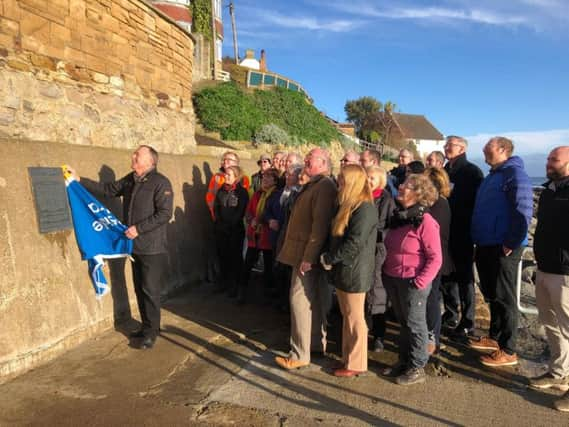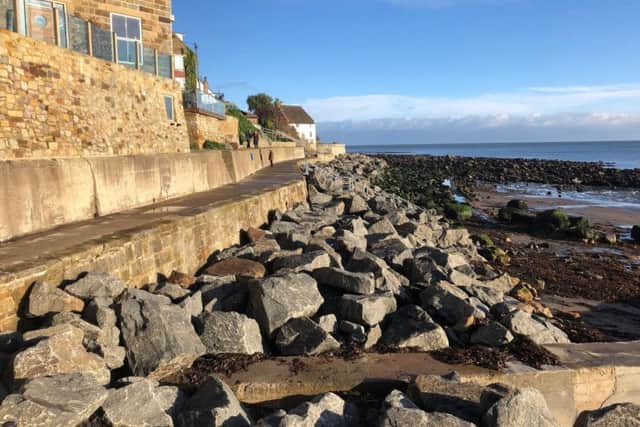Runswick Bay residents celebrate new seawall after raising £100,000 to protect their village


Villagers joined members of Scarborough Borough Council and other partners to mark the completion of a £2.288m coastal defence scheme, which will give 100 years of improved protection to 113 homes and businesses and safeguard the village’s main income stream of tourism.
Under new grant awarding guidelines from Defra people living in the village had to contribute to the cost of the scheme and through the Runswick Bay Coastal Protection Trust they raised £100,000 to preserve the village.


Advertisement
Hide AdAdvertisement
Hide AdDennis Whiteley, who has had a home in the village for 35 years and led the trust, was on hand today to see the names of those who donated honoured on the plaque.
Mr Whiteley told the Local Democracy Reporting Service that he was delighted with the look of the rock armour.
He said: “I think it looks great and everybody is very pleased with it. It blends in really well with the rest of the village and it was a project well executed and well managed. The main thing is that it is protecting the village.
Mr Whiteley said that one of the main priorities of the trust was to ensure the rock armour did not look out of place with the historic setting.
Advertisement
Hide AdAdvertisement
Hide AdHe added: “We looked at a lot of alternatives to protect the old sea wall including concrete revetments which looked hideous and this was agreed that it would be the most satisfactory scheme. A lot of thought has gone into it.
“The seawall was built in 1901 and it had more or less had its time. It took a real battering when we got high seas and was starting to break up.
“It was degrading and 15 years ago when it was given a five to 10-year life span by a survey.”
Mr Whiteley said the £100,000 from the residents all came from donations and was raised in just three months.
Advertisement
Hide AdAdvertisement
Hide AdThe Runswick Bay Coastal Protection Trust were joined by representatives from Scarborough Borough Council, Environment Agency, Royal HaskoningDHV, JBA Consulting and ESH Construction to celebrate the end of the construction project to protect the village’s concrete seawall with around 9,500 tonnes of high-density granite armour stone.
The newly created rock revetment defence, which is 250 metres long, eight metres wide and two metres high, will provide better protection to the village, including six listed structures, by helping to combat the effect of predicted rising sea levels and increased storminess.
Where possible, the scheme has also sought to protect and enhance the ecological habitat, including the innovative creation of more than 100 rock pools in the stone revetment, which is the largest creation of rock pools in the country.
The placement of the armour stones also created 20 natural rock pools.
Advertisement
Hide AdAdvertisement
Hide AdThe Runswick Bay scheme is the first major coastal defence project on the Yorkshire coast to receive financial support from the local community.
Core funding of £1.488m came from a Defra Grant in Aid administered through the Environment Agency and there was a £700,000 in-kind contribution from Yorkshire Water.
Scarborough Council’s cabinet member for Major Projects, Cllr Mike Cockerill, added: “The Runswick Bay community has been vital bringing in the local knowledge. It is all very well the boffins having the techincal side covered but to make sure it fits in with the village you need that local input.”